Submit your article of up to 500 words in length, subject to editing for clarity and brevity (please note: I run only original articles that have not appeared on any Web site or in any publication and I can’t use anything that looks like a commercial pitch). I’ll use a phony name for you unless you tell me otherwise. Thanks for sharing!
Note: the views and opinions expressed are those of the authors personally and are not necessarily representative of their current or former employers.
The Impact of the Affordable Care Act, Incentives, and EHRs
By Frasier Crane, MD
I wanted to offer several comments on the impact of initiatives such as the Affordable Care Act. I think it will have little or no positive effect and perhaps negative effects.
We already have the equivalent of multiple payment schemes to juggle and keep track of. Private insurance is not a single entity, and each plan has different requirements in terms of approvals, documentation, codes they will/won’t reimburse, etc. Medicare and Medicaid are also getting into chaos with various managed plans.
I’m a psychiatrist. My patients have to navigate their primary plans, but also the vagaries and different procedures and constraints for mental health care. Virtually all insurers “carve out” mental health to separate companies that have different contracts with health facilities and professionals than the patients’ main insurer. The extent to which being an accountable care organization could act as an incentive would depend on the proportion of one’s patients that would be part of the program. It would also depend on how severely ill most of ones patients are.
I work with patients who are have severe mental illnesses, but who often have substantial medical problems such as heart disease, diabetes, hyperlipidemia, respiratory diseases, and hypertension. Dealing with all of the added requirements and risks of being an accountable care organization wouldn’t be worth the trouble in terms of reimbursements.
Also, many of the impediments to improving my patients’ health have nothing to do with the health system. They relate to basic needs, such as food and stable housing. Housing needs dramatically lengthen my patients’ stays in the hospital and it takes loads of time for our social workers to find safe housing, yet longer lengths of stay are penalized by virtually every payment system there is, and as a clinician, I have no way of controlling that. The more that quality improvement metrics and other “incentives” are outside of physician control, the less likely it will be that people will want to deal with the hassle.
It also depends on whether the amount of the incentive is worth it. When I was in grade school, my mother developed a detailed reward system for household tasks — making the bed got a one cent reward, taking out the trash got another cent. This was 40 years ago, but a penny still didn’t go too far. After a few days, the beds reverted to their chronically unmade state. Personally, I see all of these incentives (including Meaningful Use) along the same lines. The reward-to-hassle ratio for an individual just doesn’t seem very appealing, especially when we’re already at our wits end trying to deal with existing (and constantly changing) demands from a wide variety of payers and regulators.
How does this relate to EHRs? EHRs could make our lives a whole lot easier by consolidating the various requirements for documentation, quality metrics, pre-authorizations, regulatory requirements, Joint Commission demands, etc. But they remain poorly designed, clunky to use, and don’t cover all of these regulatory / payer requirements in any systematic fashion. Politically, it is clear that we won’t be getting a single-payer system with its associated administrative simplicity any time soon.
But why can’t EHRs give clinicians a front end that feels like a single-payer system to us? The computer should be able to deal with the rest of the fragmented demands and requirements on the back end. This would give me a whole lot more time to spend talking to my patients and thinking carefully about what is needed for them, not worrying about whether I have to call the insurer in one day or two and spend 40 (uncompensated) minutes on the phone answering a laundry list of questions about the reasons that my patient is still extremely ill and needs care.
When I go to an ATM in Manhattan or Mexico or Mallorca, I see a very similar and highly usable front-end display, even though it’s connecting to a different bank (and perhaps country.) It recognizes me quickly (not a two to four minute log-in time like my hospital’s EHR), asks what language i want to use, displays the extra transaction fee for my approval (which may differ from bank to bank, but the process looks the same), and spits out my money. Quick, easy, mission accomplished, minimal stress to the user, and lets the user focus on what’s important (buying shoes?) Not true with EHR/ACO approaches.
Five Tips to Prepare for ICD-10
By Blake LeGate
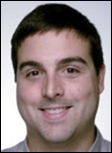
Are you dreading the transition to ICD-10? If so, then you’re not alone.
According to a recent survey of 480 physicians, administrators, office managers,and billers, 96% of the respondents reported that they are concerned about the potential impact of the transition to ICD-10.
Now that the compliance deadline for ICD-10 has been set for October 2014, physicians and medical personnel have an extra year to make the transition. For all you procrastinators, an extra year may seem like a lifetime, but readying your practice for ICD-10 is not something you want to wait until the last minute to tackle.
Where do I start? What will it cost? Who in my office will be affected? These are all important questions to ask yourself as you prepare for ICD-10. Taking the right steps to prepare for a successful transition can make or break your practice.
Here are five things practices can do to make sure they are prepared for a smooth ICD-10 transition:
- Establish a Baseline
The only way to know how far you have to go is to first figure out your starting point. Practices should conduct an impact assessment to help determine specific needs, whether it’s adding additional staff, attending ICD-10 training and/or installing software upgrades. It is also important to try to estimate and prepare for any additional expenses associated with ICD-10 implementation. Don’t be caught off guard by added costs.
- Educate Your Staff
Your coding staff will need to spend quite a bit of time familiarizing themselves with an exponentially larger number of diagnosis codes (69,368 codes to be exact) with far more specificity. While individual specialties will likely only use a fraction of these codes, there will still be a learning curve. Practices that start training their staff early and on a continual basis will be ahead of the game. ICD-10 training is available through numerous organizations such as AAPC, the nation’s largest training and credentialing organization for medical coding, auditing, compliance and practice management. Depending on the size of the practice, it may be more beneficial and cost effective to provide in-depth training to a small number of staff members who can then train the rest of the staff.
- Evaluate Software Vendors
Are your software vendors ready for ICD-10? Check with your practice management software vendor(s) to make sure they are taking the necessary steps to update their software with the new ICD-10 code set. Also, make sure your software will have some way of maintaining ICD-9 codes along with ICD-10 codes during the transition phase. Some vendors are including ICD-9 codes as custom code sets so that practices will have the ability to resubmit unpaid claims with service dates prior to October 1, 2014.
- Explore Your Options
For many small and medium-sized practices, coding for ICD-9 is difficult enough as it is. Training in-house staff on new ICD-10 codes may not necessarily be the best option for some practices. The cost of additional training, increased workload, and potential reimbursement issues may end up being more expensive than if you were to outsource your billing needs. When looking into clearinghouses or third-party billing services, make sure that they are prepared to comply with the ICD-10 transition.
- Exhibit a Positive Attitude
While it may seem overwhelming, there is light at the end of the tunnel. ICD-10 provides many long-term benefits that largely outweigh the initial headache and investment that may come with the transition. ICD-10 should reduce coding errors and increase accuracy, which results in higher quality information used to measure health care service quality. It also puts the United States back on par with the rest of the world in terms of coding systems. Europe has been using ICD-10 successfully for the past decade. Regardless of how you choose to approach ICD-10 implementation, remember that you are contributing to the betterment of healthcare nationwide.
Blake LeGate is assistant manager of social media of Nuesoft Technologies, Inc. of Marietta, GA.



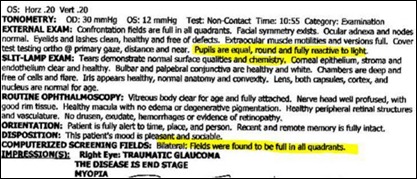





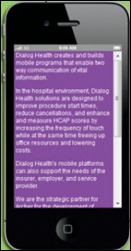
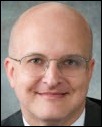

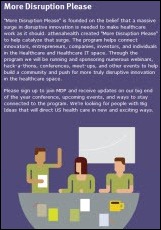
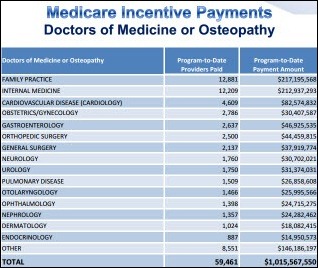

The article about Pediatric Associates in CA has a nugget with a potentially outsized impact: the implication that VFC vaccines…